
Unfortunately, digital crime is an everyday reality. We have created this page to be clear on our position and share information with you about common types of scams; real-life situations that we have seen as part of digital collaboration with our customers and business partners. The latest variant of email attacks afflicting organizations often operates by hiding in plain sight. Enza Zaden sees a significant rise in this kind of attacks and wants to inform you about these scams.
Many of the scams want to make you pay to the imposter’s bank account.
Enza Zaden will never ask you to change its bank details over e-mail or phone. Such changes will be sent to you in a separate written statement, on paper. You must verify any change with your Enza Zaden representative by phone, on a phone number that was previously known to you.
Business email attackers do whatever they can to get victims to act before they think, relying on them being too busy to engage with emails rationally. While reading every email with a critical eye is much easier said than done, being aware of email risk is a good starting point:
Be skeptical of deadlines emailed at short notice that involve sending money or sensitive data.
Be wary of unusual purchase requests, even when they come from high-level employees and entities you trust.
Keep a careful eye on emails from employees sharing new direct deposit details. Have additional authentication steps in place whenever vendors share new banking details for invoice fulfillment.
Allways verify any change by phone, on a phone number that was previously known to you.
Question requests to keep information confidential and be skeptical of warnings to limit or bypass normal communication channels.
Pay close attention to requests for wire transfers that must be completed hastily or without proper authorization.
Allways check the mailadress of the sender of the email to see if it is not faked. We see faked emails from Enza Zaden as well as faked mail adresses from our commercial relations
Listen to your gut: if something doesn’t look or feel right, don’t be afraid to investigate. If a reply message looks “off,” you may have received a spoofed message. When in doubt, allways check the mailadress of the sender of the email to see if it is not faked. Send a separate email to the sender rather than replying to the one sent. If you receive a suspicious email from a familiar vendor asking for an invoice to be urgently fulfilled, call the vendor using a phone number or website you know is real to confirm that they sent the email. A few extra seconds of caution can help prevent lots of strife later on
It is important to report anything unusual to us. This allows us to work with you to reduce the impact, warn others and raise awareness.
Please report to security@enzazaden.com Always include suspicious e-mail messages as an attachment, as this contains the source information that is needed to analyze it.
A cybercriminal sends you messages that seem to come from Enza Zaden. They could inquire about payment status or outstanding amounts. If you respond to the message, they will ask you to transfer money to a new bank account, claiming bank issues. They may use an Enza Zaden e-mail address in the so-called display name. However, the message display name is just a line of text where the sender can put in anything. Alternatively, a domain is used that mimics legitimate Enza Zaden domains; i.e. enzazadden.com instead of enzazaden.com.
Using business details can make these messages convincing. Business details could come from your and our websites or public sources such as LinkedIn.
Example of a false message
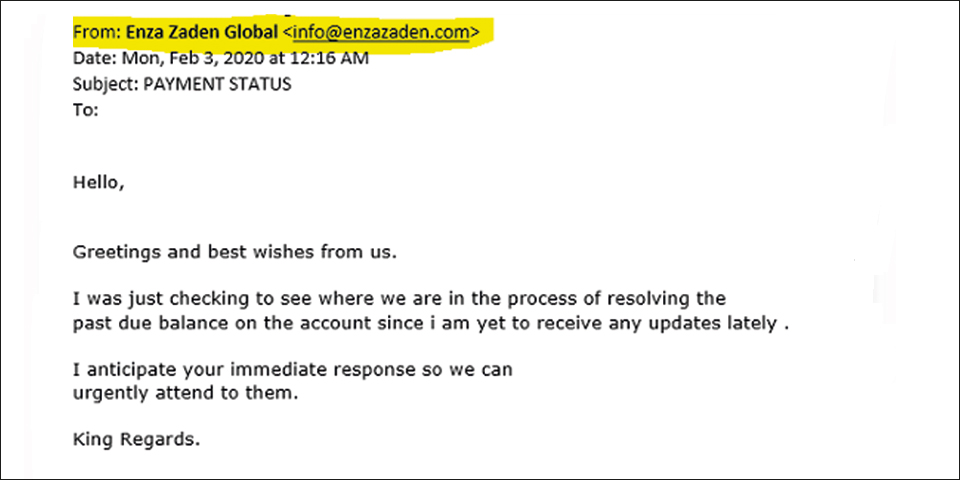
If the display name is used to impersonate an Enza Zaden address, the reply address usually reveals the real sender address. After all, the imposter will want to receive your response.
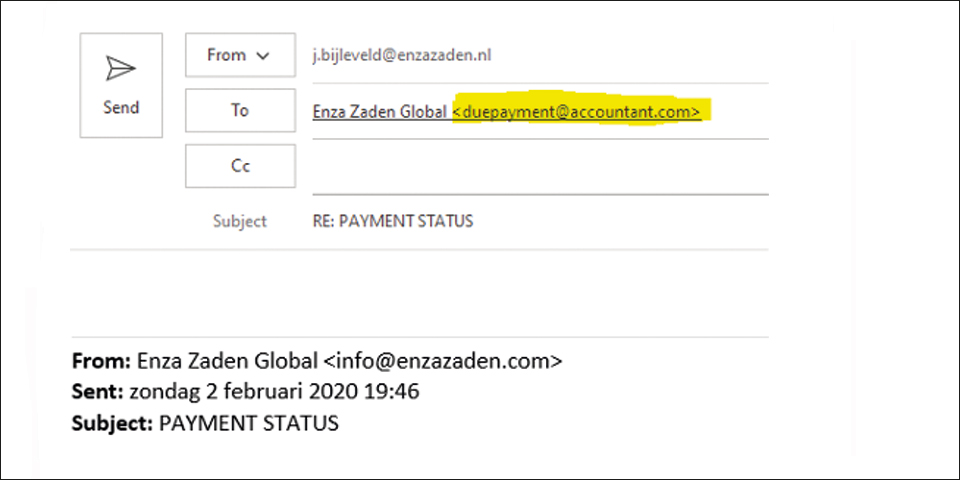
In the message below the imposter used @enzazaden.ml (ML instead of NL)
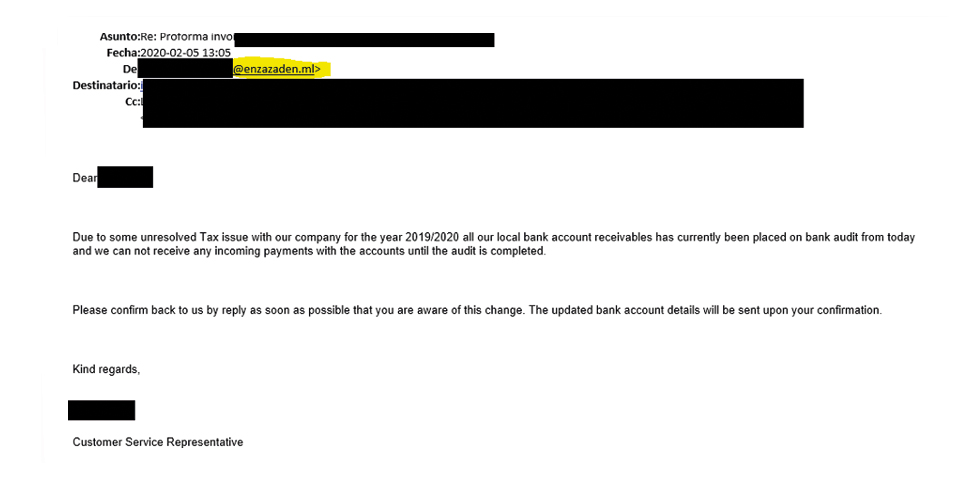
We have seen cases were a computer virus/malware was able to hijack an e-mail conversation between an Enza Zaden employee and the customer and insert or add to a message. The hacker attempted to convince the customer to pay to a different bank account.
Example of a false message
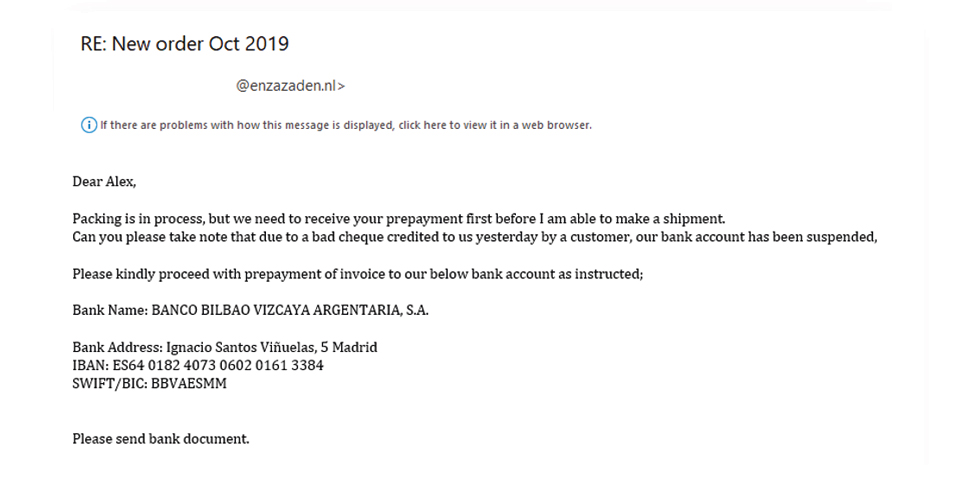
A reply to the message reveals a different address
A customer received an invoice were the Enza Zaden bank information was blanked out and new instructions were added to the footer.
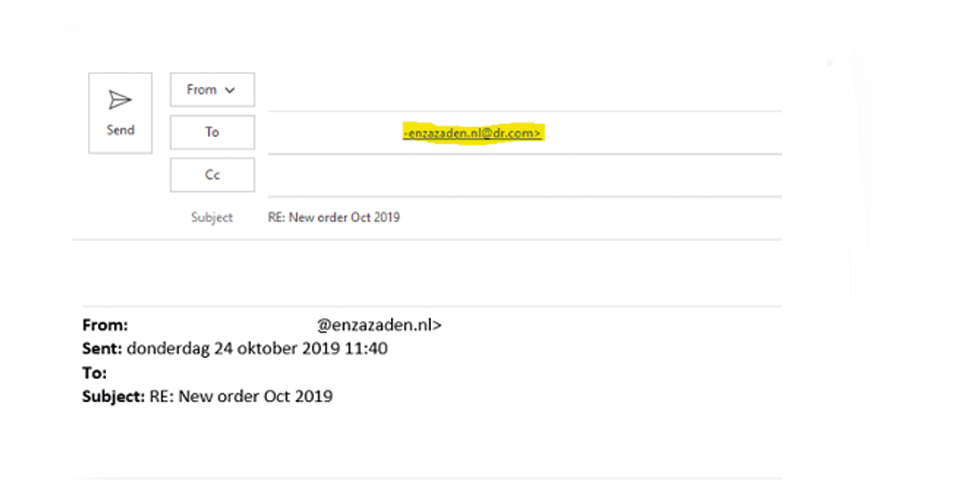
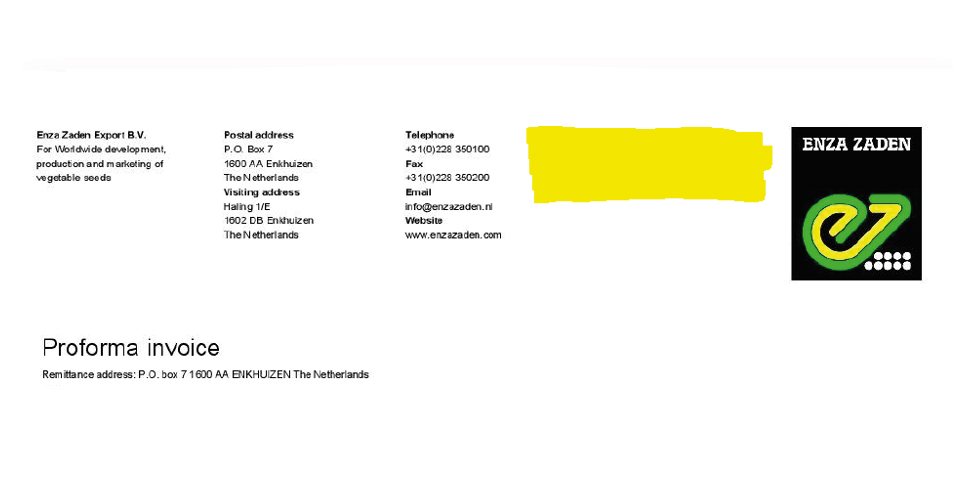
Enza Zaden uses all common technical e-mail security standards to allow you to determine the legitimacy of a message:
Please contact your IT or e-mail provider on how to have your e-mail system check for e-mail authenticity marks.
The US government cyber security agency has useful guidance that could help to get you organized. The cyber security essentials guide provides a good basic overview.
The NIST Cyber security framework provides a profound approach to cyber security.